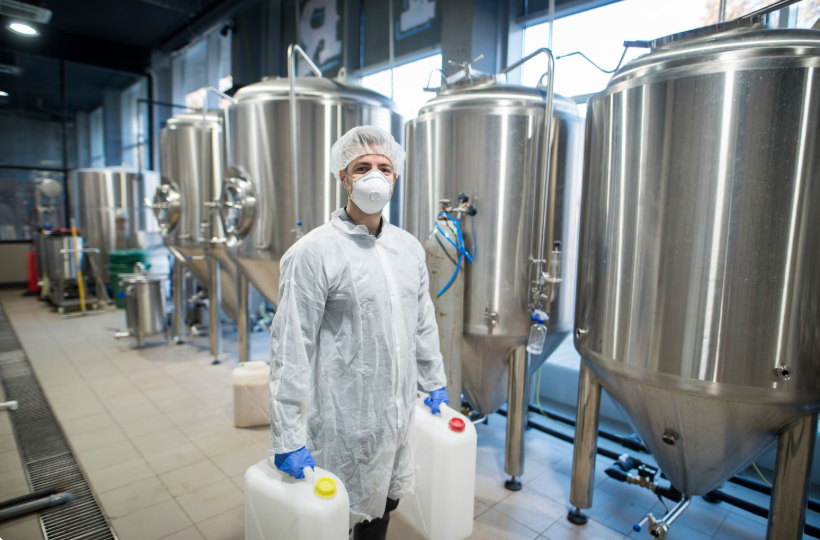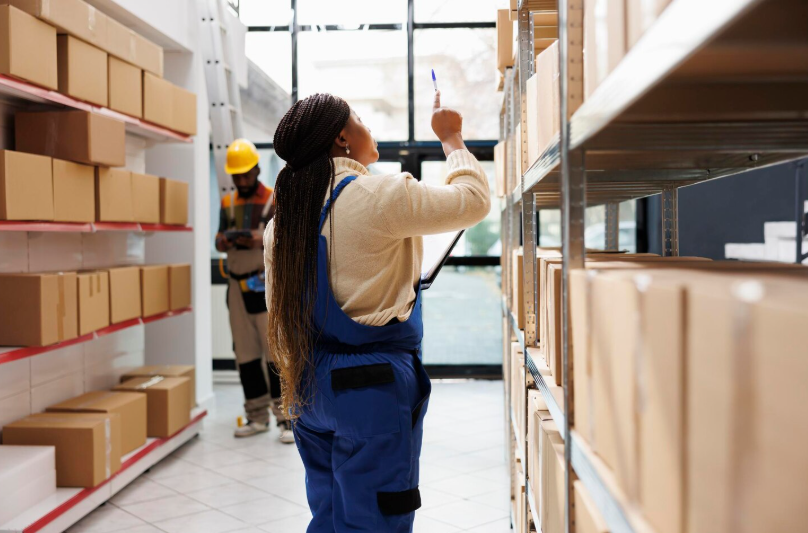Introduction
When people hear the term “housekeeping”, many imagine sweeping floors or dusting desks. But in the world of safety and workplace management, good housekeeping is much more than cleaning—it’s about creating an organized, efficient, and safe environment where employees can thrive.
Whether you are managing a factory floor, a high-tech laboratory, a warehouse stacked with inventory, or a busy office space, the principles of good housekeeping play a crucial role in safety, productivity, and overall employee well-being.
In this article, we’ll explore the methods of good housekeeping in different work environments, share practical tips, and explain why it matters for both safety and efficiency.
Why Good Housekeeping Matters
Before diving into specific methods for each workplace, let’s understand the importance of housekeeping:
- Prevents accidents and injuries – A cluttered floor or poorly stored chemical can cause serious hazards.
- Boosts efficiency – Workers spend less time looking for tools, documents, or equipment when everything is organized.
- Improves morale – A clean and organized workplace makes employees feel valued and motivated.
- Enhances company image – Visitors, clients, and auditors always notice how well-maintained a workplace is.
- Compliance with laws – Occupational safety regulations often require proper housekeeping standards.
Now, let’s break down how to maintain effective housekeeping in factories, laboratories, warehouses, and offices.
1. Good Housekeeping in Factories
Factories are dynamic environments with heavy machinery, moving equipment, tools, and materials. Poor housekeeping here can lead to fatal accidents.

🔹 Methods of Good Housekeeping in Factories
- Keep Floors Clean and Dry
- Spilled oil, grease, or water should be cleaned immediately.
- Use anti-slip mats near machines and walkways.
- Organize Tools and Equipment
- Implement the 5S method (Sort, Set in order, Shine, Standardize, Sustain).
- Provide shadow boards or tool racks for easy access and storage.
- Proper Waste Disposal
- Separate waste bins for general, recyclable, and hazardous waste.
- Empty bins regularly to avoid overflow.
- Maintain Clear Aisles and Exits
- No storage in walkways or near emergency exits.
- Mark pathways with yellow floor markings.
- Machine Cleanliness
- Regular cleaning schedules for machines to prevent buildup of dust or debris.
- Report oil leaks or unusual conditions immediately.
- Personal Protective Equipment (PPE) Storage
- Provide designated PPE racks or lockers.
- Encourage workers to store PPE neatly after use.
- Housekeeping Audits
- Conduct weekly inspections to ensure cleanliness standards are followed.
👉 Tip: A “clean-as-you-go” policy works best in factories—employees clean their work area after every task.
2. Good Housekeeping in Laboratories
Laboratories deal with chemicals, biological agents, glassware, and sensitive instruments, making housekeeping essential for safety and accuracy.

🔹 Methods of Good Housekeeping in Laboratories
- Chemical Storage and Labeling
- Store chemicals in designated cabinets (flammables in flame-proof cabinets, acids in corrosion-resistant cabinets).
- Always use proper labeling with hazard symbols.
- Clear Work Benches
- Avoid unnecessary clutter on lab benches.
- Keep only the chemicals or equipment needed for the experiment.
- Spill Control
- Maintain spill kits for acids, solvents, and biohazards.
- Train staff in proper spill response procedures.
- Glassware Handling
- Broken glass should be disposed of in special sharps containers.
- Inspect glassware regularly for cracks.
- Ventilation and Fume Hoods
- Keep fume hood sashes clean and closed when not in use.
- Never overcrowd inside the fume hood.
- Waste Segregation
- Separate chemical waste, biohazard waste, and general waste.
- Ensure regular disposal as per regulations.
- Personal Hygiene and Safety
- Wash hands after experiments.
- Store lab coats, gloves, and goggles properly.
👉 Tip: A well-labeled and color-coded storage system prevents confusion and enhances lab safety.
3. Good Housekeeping in Warehouses
Warehouses are high-risk areas due to storage racks, forklifts, pallets, and heavy goods. Accidents here often occur due to poor material handling and disorganized storage.

🔹 Methods of Good Housekeeping in Warehouses
- Proper Storage of Materials
- Stack goods evenly and not too high.
- Heavy items should always be stored at lower levels.
- Aisle and Pathway Clearance
- Keep aisles clear for forklift and pedestrian movement.
- Use mirrors and warning signs at blind corners.
- Lighting and Ventilation
- Ensure adequate lighting in racks and loading zones.
- Good ventilation to prevent dust buildup.
- Spill and Leak Management
- Oil leaks from forklifts should be cleaned immediately.
- Provide absorbent pads near storage of liquids.
- Pallet Management
- Avoid broken pallets; repair or dispose of them.
- Stack pallets neatly in designated areas.
- Fire Safety
- No storage near fire exits or hydrants.
- Fire extinguishers should be accessible and visible.
- Signage and Floor Marking
- Use floor paint to mark loading/unloading zones.
- Display safety signs for restricted areas.
👉 Tip: A “first in, first out (FIFO)” system not only reduces clutter but also prevents expired goods from piling up.
4. Good Housekeeping in Offices
Many people think offices are “low-risk” environments, but poor housekeeping here can also lead to slips, trips, falls, fire hazards, and inefficiency.

🔹 Methods of Good Housekeeping in Offices
- Clean Workstations
- Avoid paper clutter by digitizing files.
- Organize stationery and office supplies.
- Electrical Safety
- Prevent loose wires and tangled cords across walkways.
- Use cable organizers or floor covers.
- Furniture Arrangement
- Keep chairs, drawers, and cabinets pushed back after use.
- Avoid blocking pathways with extra furniture.
- Paper and Waste Management
- Shred confidential papers.
- Provide separate bins for recyclable waste.
- Restroom and Pantry Cleanliness
- Ensure restrooms are cleaned multiple times a day.
- Pantry should be kept free of leftover food waste.
- Indoor Air Quality
- Maintain air conditioners and filters regularly.
- Add indoor plants for fresh air and a pleasant environment.
- Emergency Preparedness
- Keep fire exits and staircases clear at all times.
- Display evacuation plans prominently.
👉 Tip: Encourage a “clean desk policy” where employees leave desks tidy before leaving for the day.
Practical Steps to Implement Good Housekeeping Across All Workplaces
Regardless of whether it’s a factory, lab, warehouse, or office, some universal housekeeping practices apply everywhere:
- Daily Cleaning Schedules – Assign cleaning tasks to responsible teams.
- Awareness Training – Teach employees why housekeeping is linked to safety.
- Regular Inspections – Use checklists to spot problems early.
- Employee Involvement – Make everyone responsible for their work area.
- Continuous Improvement – Conduct audits and reward good housekeeping practices.
Final Thoughts
Good housekeeping is not just about cleaning—it’s about building a safety culture in the workplace. From the noise-filled factory floor to the chemical-laden laboratory, from the inventory-packed warehouse to the paperwork-heavy office, the methods may differ but the goal remains the same: a safe, efficient, and healthy workplace.
When housekeeping is done right, accidents are minimized, productivity soars, and employees take pride in their workplace.
So, the next time you think about housekeeping at work, remember—it’s not a chore; it’s a safety strategy.
✅ Did you find this article useful? Share it with your colleagues and workplace teams to promote a safer, cleaner, and more efficient environment.
🔁 Readers also enjoyed these blog posts:
- Safety Management’s Role: The Unsung Hero Behind Every Successful Organization
- Safety Management and Its Responsibilities: Protecting People, Preventing Hazards, and Promoting a Culture of Care
- Benchmarking for Safety Performance: A Key to Continuous Improvement
“Start Your Website Journey Today – Exclusive Hostinger Discounts!”

Turn Any Idea into Viral,
Jaw-Dropping AI Videos in Seconds!









